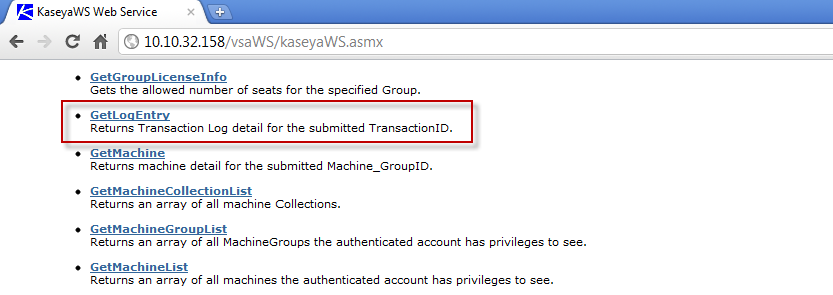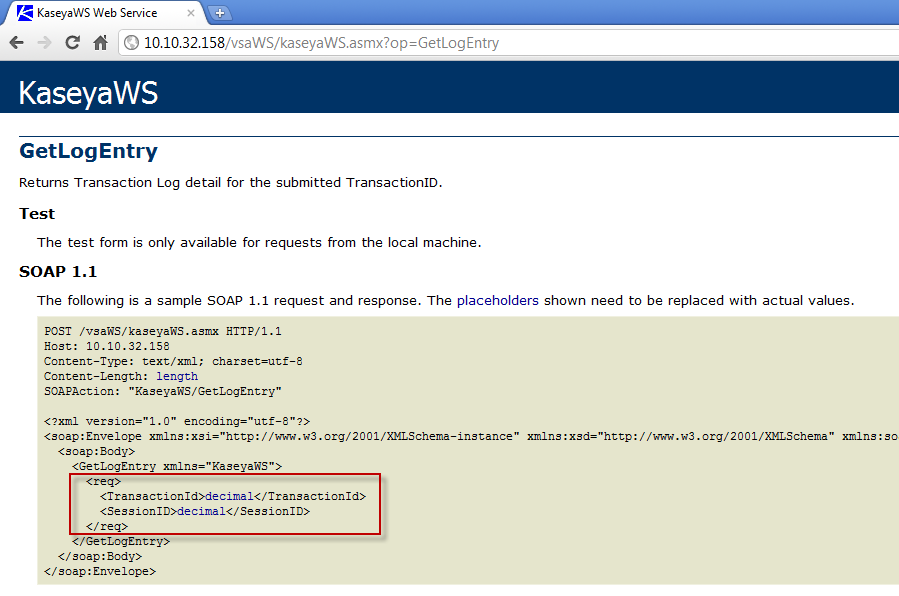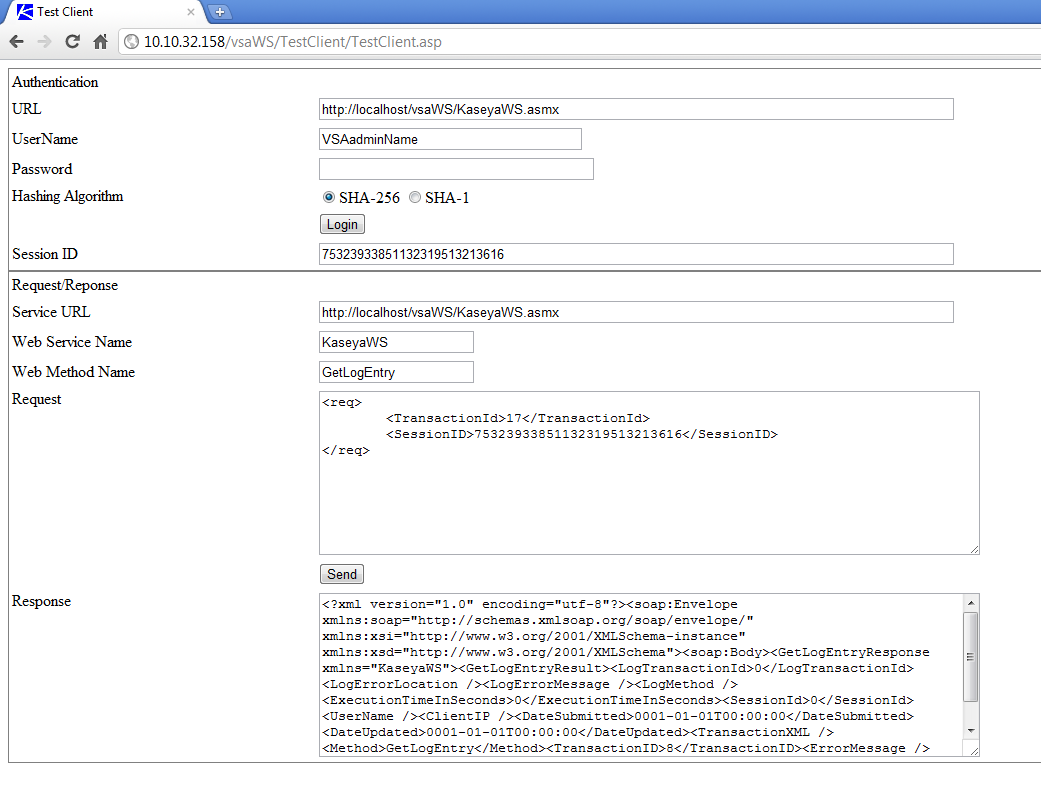A test client ASP page is also distributed with the VSA API Web Service to help you familiarize yourself with the various API operations. You can use it to see how the ASP client was constructed and incorporate any part of its code into your own application. Users can browse to the actual /vsaWS/KaseyaWS.asmx page of any Kaseya Server, select a web method and copy and paste the exact XML SOAP request structure specified in the WSDL.
Authentication is in its own frame at the top of the page. The sessionID from a successful authentication is exposed and can be copied and pasted in subsequent XML requests.
Note: This page does not automatically incorporate the displayed sessionID into subsequent request statements like the Sample API C# Application does.
Example 1: Authentication
http://<your-KServer>/vsaWS/TestClient/TestClient.asp
The Session ID textbox is populated with the session ID generated by your logon. You will need to copy and paste this session ID into subsequent XML requests.

Example 2 - Creating a Get Request


Note: The <BrowserIP></BrowserIP> element in any method can be ignored. See Limiting Requests by IP Address and User for more information.

The results display in the Response pane.